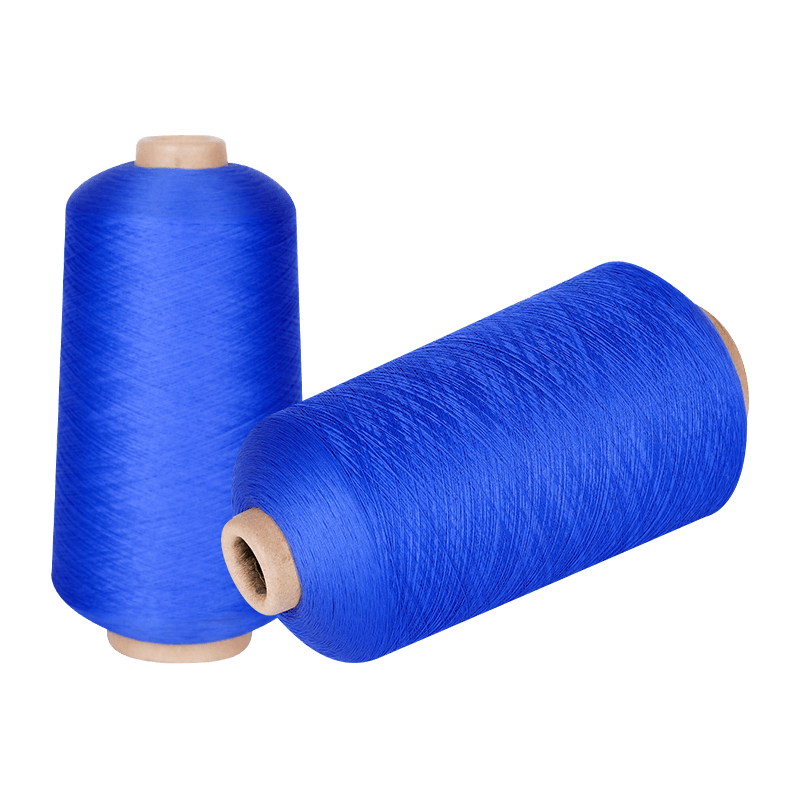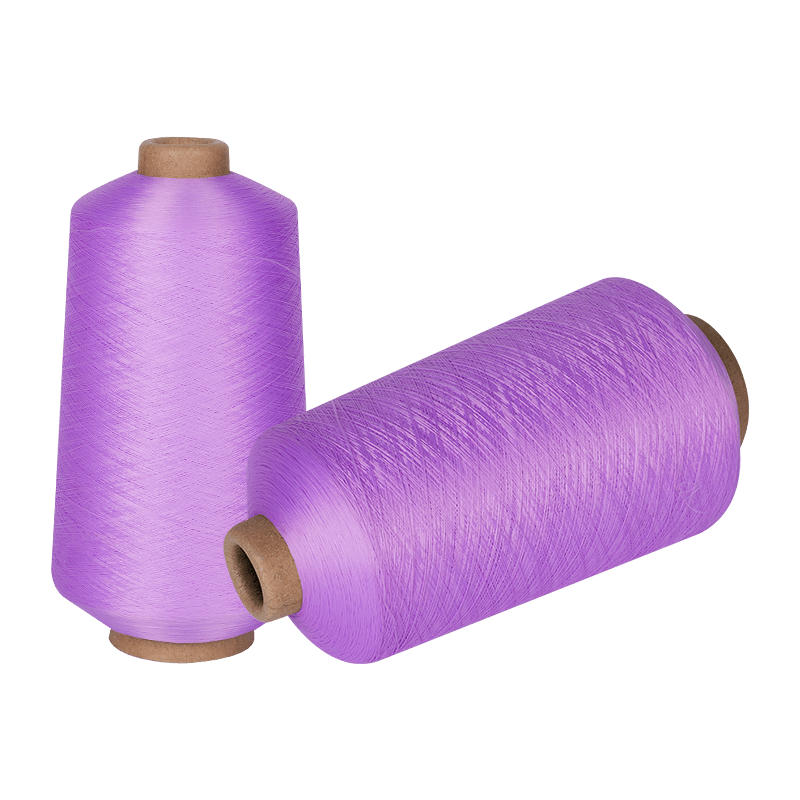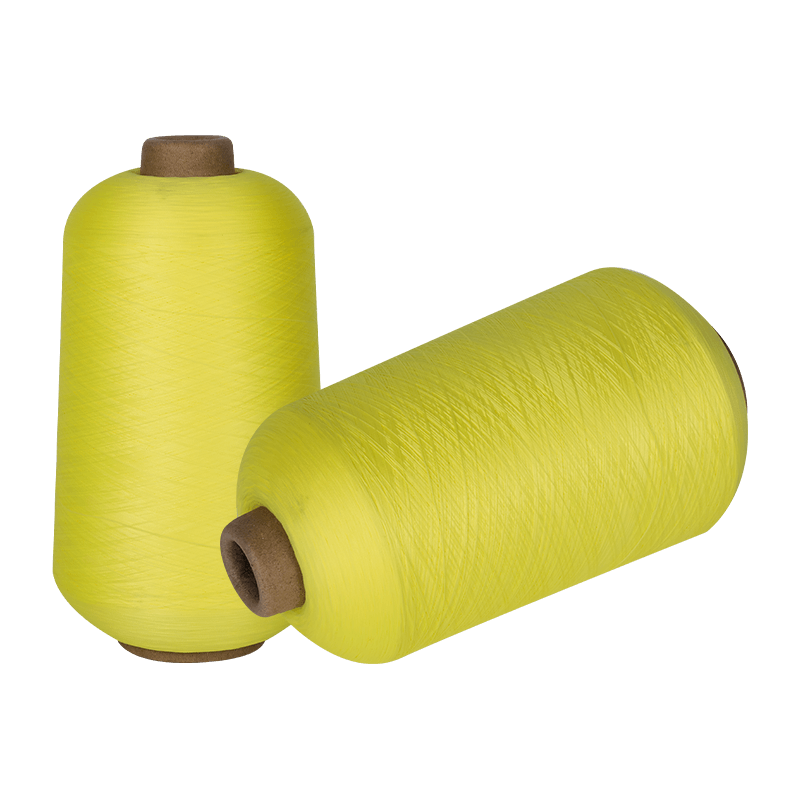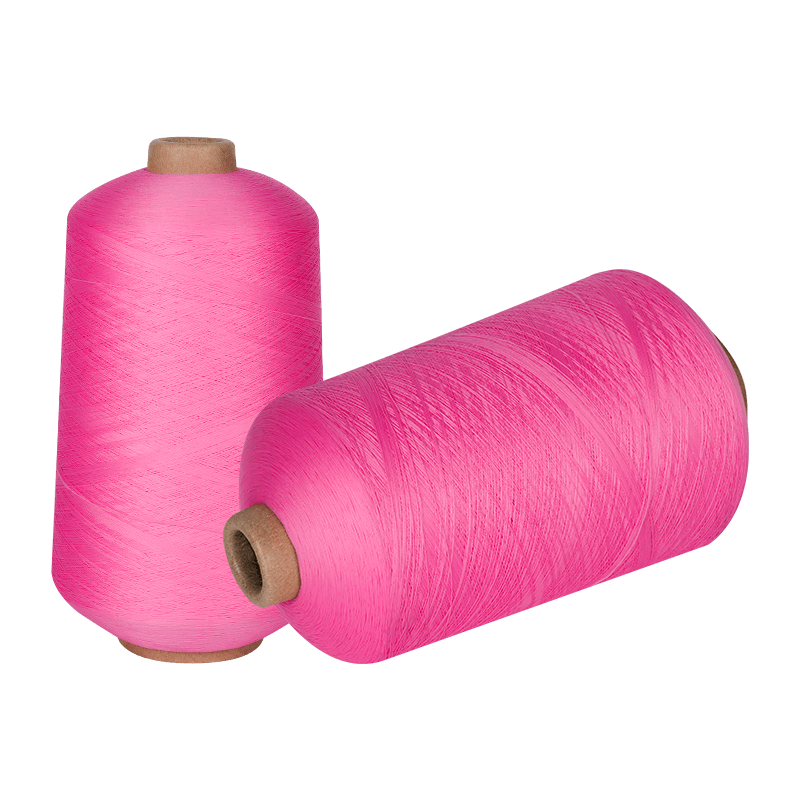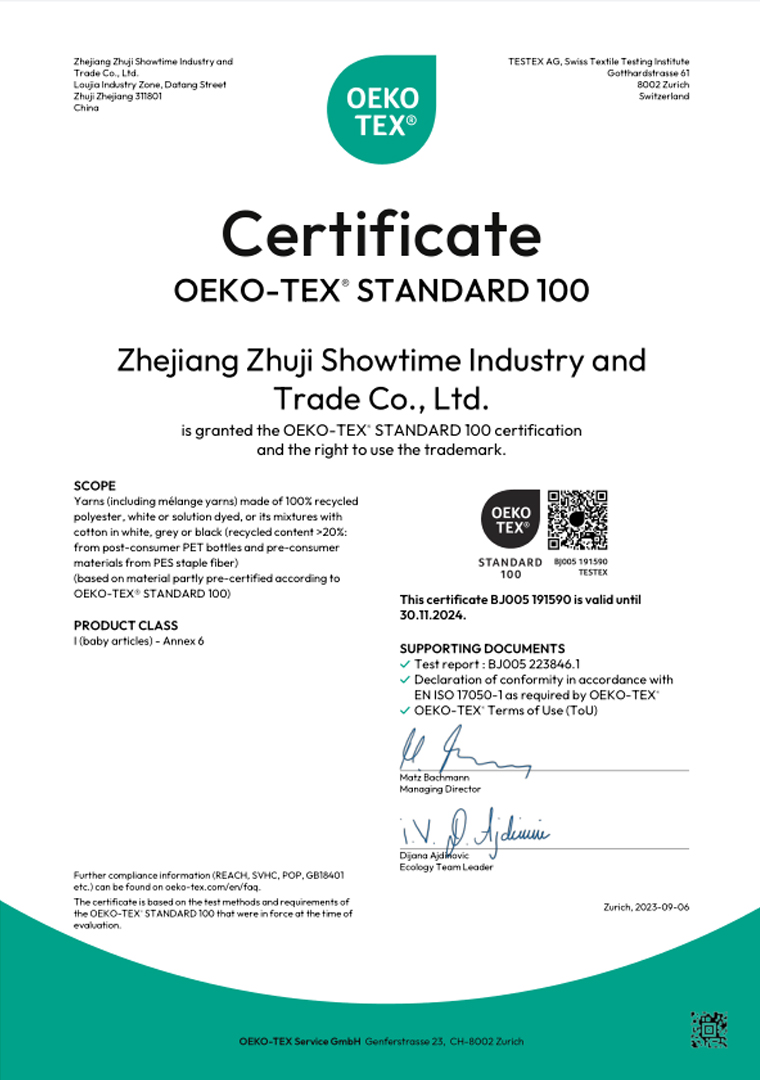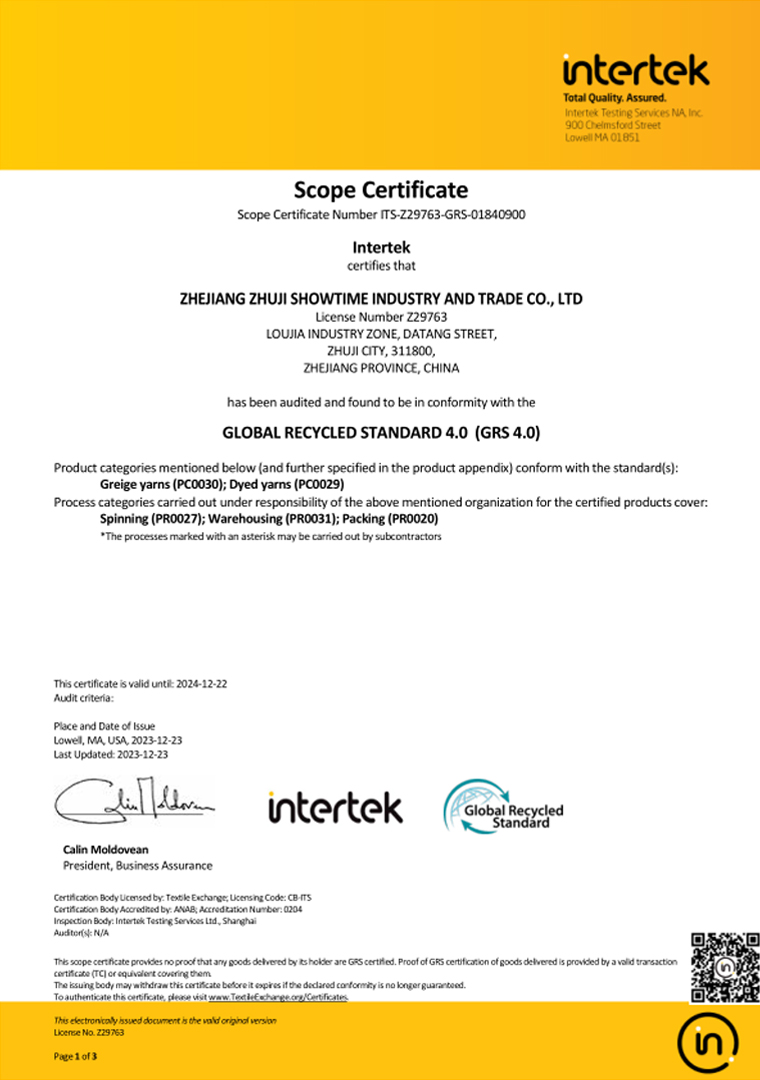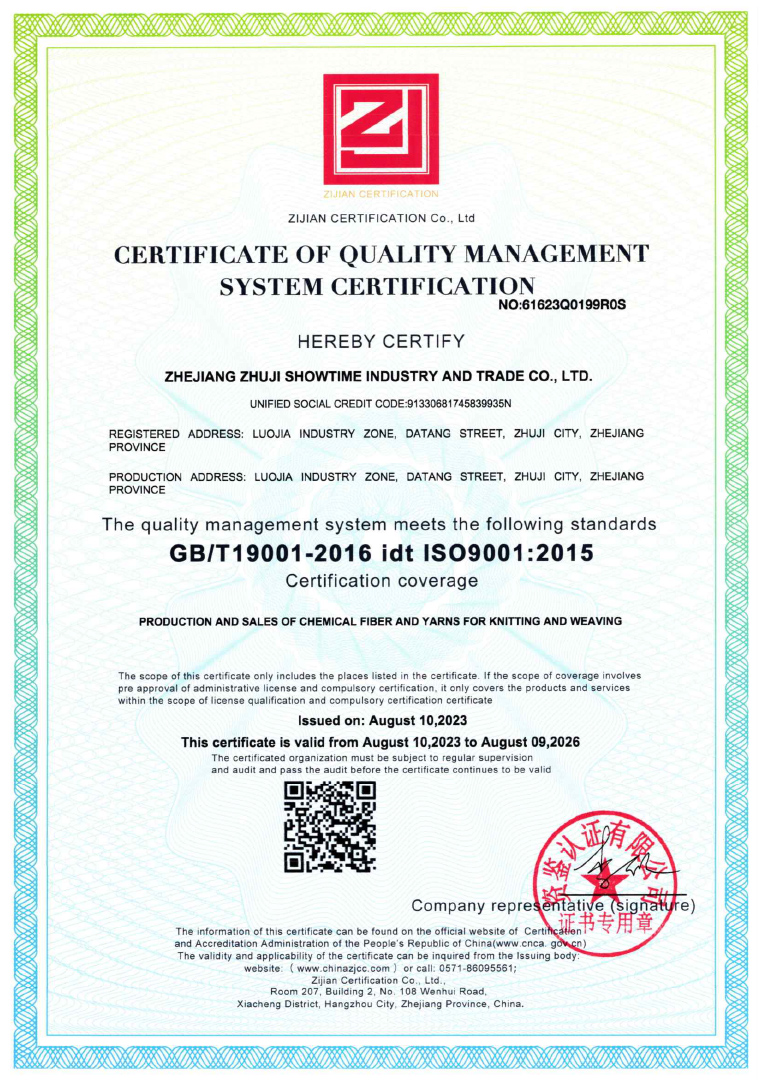The following is an explanation of the water resistance of spun polyester: I. Inherently not waterproof, but can resist splashes ▸ Ordinary spun polyester fabric: Absorbs water like a sponge: The fi...
READ MOREProduct category
Contact Us
Imitation Nylon High Elastic Yarn
Imitation nylon high elastic yarn is a man-made fiber commonly used in the manufacture of clothing and other textiles. It is a synthetic fiber with properties similar to nylon, such as high strength and abrasion resistance. One of the characteristics of Imitation Nylon High Elastic Yarn is its high degree of elasticity, which makes it commonly used in clothing applications where stretch and resilience are required, such as sportswear or tight-fitting clothing.
As a professional wholesale Imitation Nylon High Elastic Yarn Manufacturer and Imitation Nylon High Elastic Yarn suppliers, With advanced equipment and professional technical employees, our company passed the ISO9001:2000 certification in 2003, “SHOWTIME”—a series of products that sell well in the major domestic markets, exported to the USA, Mexico, Russia, Egypt, Japan, Vietnam, Thailand, Uzbekistan and other countries and districts in Africa, Southeast Asia, the Silk Road Economic Belt.
-
-
The following explains the actual situation regarding shrinkage of spun polyester: I. Basic Characteristics: Generally does not shrink, but there are exceptions. • Usually does not shrink Spun polye...
READ MORE -
Here is an objective analysis of whether spun polyester is suitable for summer: I. Obvious Disadvantages of Wearing Spun Polyester in Summer ▸ Stuffy and Unbreathable: Spun polyester is essentially ...
READ MORE -
1. What is it? Spun polyester is essentially "yarn made by cutting plastic into shorter pieces."Regular polyester (long fiber) is like a single, smooth, and resilient plastic filament.Spun polyester i...
READ MORE -
Here is an introduction to spun polyester: 1. What is it essentially? Spun polyester is "yarn made by cutting plastic into shorter pieces."Regular polyester (long fiber) is like a whole plastic fila...
READ MORE
In the textile industry, imitation nylon high elastic yarn has become the preferred material for many high-end textiles and daily necessities with its excellent elasticity, wear resistance and wrinkle resistance. As a leader in this field, Zhejiang Zhuji Showtime Industry And Trade Co., Ltd. has successfully pushed the application of imitation nylon high elastic yarn to a new height with its exquisite production technology and spirit of continuous innovation.
The production process of imitation nylon high elastic yarn is a complex and delicate process, which mainly includes key steps such as raw material preparation, polymerization reaction, spinning molding, fiber stretching, fiber dyeing, fiber finishing and heat fixation.
Raw material preparation: Select high-quality nylon raw materials such as nylon 6 or nylon 66, and necessary additives to ensure the purity and stability of the raw materials.
Polymerization reaction: Under specific temperature and pressure, the monomer raw material is converted into a high molecular polymer through polymerization reaction. This step requires precise control of reaction conditions and catalyst selection to ensure the quality and performance of the polymer.
Spinning molding: After the polymer is melted, it is drawn through a spinning machine to form a high-elastic yarn fiber. During the spinning process, by adjusting parameters such as spinning speed, temperature and stretching multiple, fibers of different specifications and properties can be obtained.
Fiber stretching: The spun fibers are stretched to improve the strength and elasticity of the fibers. The stretching process requires strict control of the stretching speed and temperature to avoid fiber breakage or performance degradation.
Fiber dyeing: The fibers are dyed according to product requirements. Environmentally friendly dyes and advanced dyeing processes are used to ensure uniform dyeing and good fastness.
Fiber finishing and heat fixing: The dyed fibers are finished to remove surface impurities and burrs, and heat fixed to stabilize the structure and properties of the fibers.
Zhejiang Zhuji Showtime Industry And Trade Co., Ltd., as a leading enterprise in the textile industry, has been committed to the research and development and production of imitation nylon high-elastic yarn. With advanced production equipment, strict quality control system and a strong R&D team, the company continues to promote the innovation and optimization of the production process of imitation nylon high-elastic yarn.
Technological innovation: The company focuses on technological innovation, continuously introduces advanced production technologies and equipment at home and abroad, and improves production efficiency and product quality. At the same time, it strengthens cooperation with universities and scientific research institutions to jointly carry out research and development and application research of new materials.
Quality control: The company has established a strict quality control system, from raw material procurement to finished product delivery, every link is strictly tested and monitored. By implementing ISO9001 quality management system certification and ISO14001 environmental management system certification, it ensures that the products meet international standards and customer requirements.
Product diversification: The company continues to launch a variety of imitation nylon high elastic yarn products according to market demand and customer requirements. The products are widely used in knitwear, hosiery, woven fabrics, sanitary products and other fields to meet the needs of different industries and consumers.
Green environmental protection: The company pays attention to environmental protection and sustainable development, uses environmentally friendly raw materials and dyes, and reduces pollutant emissions in the production process. At the same time, strengthen the treatment and recycling of waste to achieve resource recycling and environmental protection.
In short, Zhejiang Zhuji Showtime Industry And Trade Co., Ltd. has achieved remarkable results in the field of imitation nylon high elastic yarn with its exquisite production technology and spirit of continuous innovation. In the future, the company will continue to adhere to the business philosophy of "quality first, customer first", continuously promote technological innovation and product upgrading, and contribute more to the development of the textile industry.



